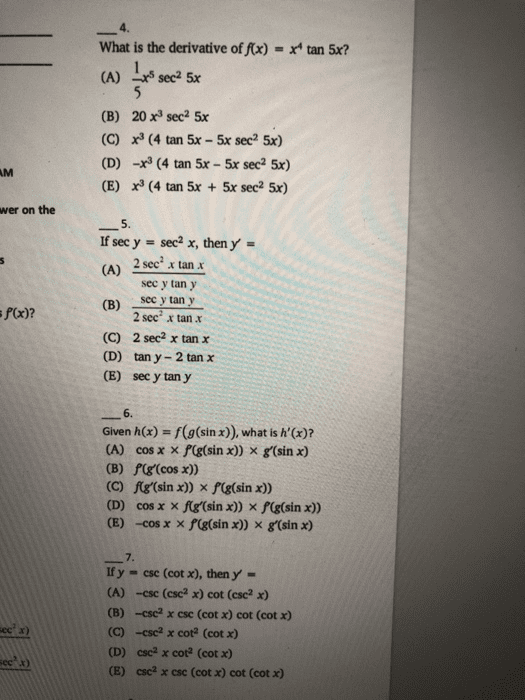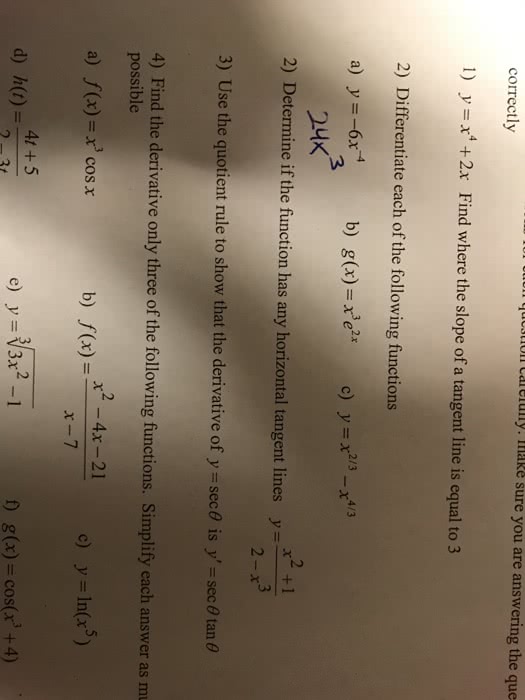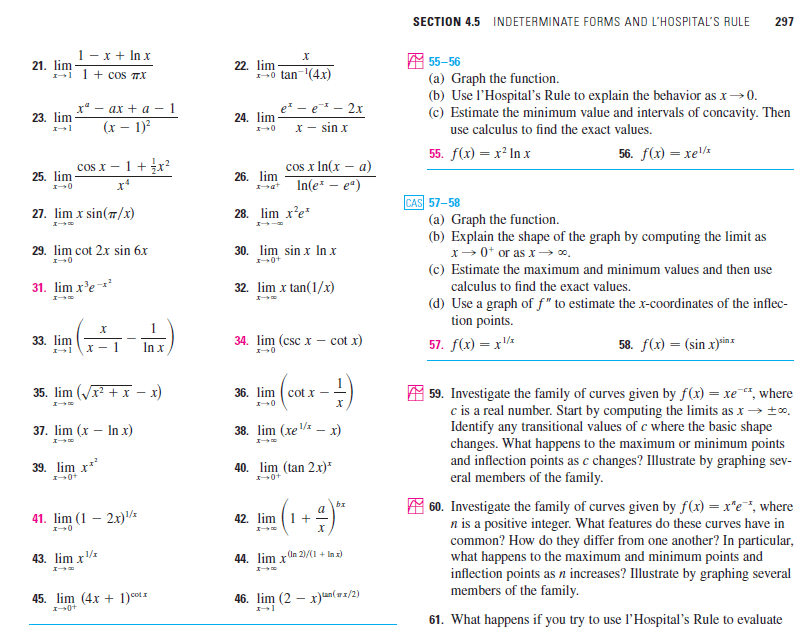MATH 100 Lecture Notes - Lecture 3: Quotient Rule, Trigonometric Functions, Product Rule

Math 100
Lesson 2.3 – Product and Quotient Rule and Higher-Order Derivatives
• Theorem 2.7: Product Rule
The product of two differentiable functions f & g is itself differentiable. The derivative of
f*g is the first function multiplied by the derivative of the second function, plus the
second function multiplied by the derivative of the first:
If there are three functions:
Example 1: What is the derivative of ?
Apply the product rule, so let f(x)=x2, g(x)=sin(x)*cos(x):
• Theorem 2.8: Quotient Rule
The quotient
of two differentiable functions is differentiable itself at all values of x
except for g(x)≠0. Derivative is given by denominator multiplied by derivative of
numerator minus numerator multiplied by derivative of denominator, all divided by the
square of the denominator:
g(x)≠0
• Theorem 2.9: Derivatives of Trigonometric Functions
find more resources at oneclass.com
find more resources at oneclass.com
Document Summary
Lesson 2. 3 (cid:862)product and quotient rule and higher-order derivatives(cid:863: theorem 2. 7: product rule. Apply the product rule, so let f(x)=x2, g(x)=sin(x)*cos(x): The product of two differentiable functions f & g is itself differentiable. The derivative of f*g is the first function multiplied by the derivative of the second function, plus the second function multiplied by the derivative of the first: [(cid:1858)(cid:4666)(cid:1876)(cid:4667)(cid:1859)(cid:4666)(cid:1876)(cid:4667)]=(cid:1858)(cid:4666)(cid:1876)(cid:4667)(cid:1859) (cid:4666)(cid:1876)(cid:4667)+ (cid:1859)(cid:4666)(cid:1876)(cid:4667)(cid:1858) (cid:4666)(cid:1876)(cid:4667) Example 1: what is the derivative of (cid:1877)=(cid:1876)(cid:2870)sin(cid:4666)(cid:1876)(cid:4667)cos (cid:4666)(cid:1876)(cid:4667)? (cid:1877) =(cid:884)(cid:1876) (cid:1871)(cid:4666)(cid:1876)(cid:4667) cos(cid:4666)(cid:1876)(cid:4667)+(cid:1876)(cid:2870) cos(cid:4666)(cid:884)(cid:1876)(cid:4667)=(cid:1876)(cid:2870) cos(cid:4666)(cid:884)(cid:1876)(cid:4667)+(cid:1876) sin (cid:4666)(cid:884)(cid:1876)(cid:4667) The quotient (cid:3033)(cid:4666)(cid:4667)(cid:3034)(cid:4666)(cid:4667) of two differentiable functions is differentiable itself at all values of x square of the denominator: [(cid:3033)(cid:4666)(cid:4667)(cid:3034)(cid:4666)(cid:4667)]=(cid:3034)(cid:4666)(cid:4667)(cid:3033) (cid:4666)(cid:4667) (cid:3034) (cid:4666)(cid:4667)(cid:3033)(cid:4666)(cid:4667) Derivative is given by denominator multiplied by derivative of numerator minus numerator multiplied by derivative of denominator, all divided by the g(x) 0: theorem 2. 8: quotient rule, theorem 2. 9: derivatives of trigonometric functions (cid:1856)(cid:1856)(cid:1876)[tan(cid:4666)(cid:1876)(cid:4667)]=(cid:1871)(cid:1857)(cid:1855)(cid:2870)(cid:1876) (cid:1856)(cid:1856)(cid:1876)[sec(cid:4666)(cid:1876)(cid:4667)]=sec(cid:4666)(cid:1876)(cid:4667) tan (cid:4666)(cid:1876)(cid:4667) (cid:1856)(cid:1856)(cid:1876)[cot(cid:4666)(cid:1876)(cid:4667)]= (cid:1855)(cid:1871)(cid:1855)(cid:2870)(cid:1876) (cid:1856)(cid:1856)(cid:1876)[csc(cid:4666)(cid:1876)(cid:4667)]= csc(cid:4666)(cid:1876)(cid:4667) cot (cid:4666)(cid:1876)(cid:4667, higher-order derivatives:





